Introduction: More Than Just an Accessory — A Collar is Your Dog’s First Line of Safety
Choosing the right dog collar can feel overwhelming. Should you go with leather or nylon? Flat or rolled? Is a harness safer than a collar? Many pet owners face the same questions when trying to balance comfort, safety, and style for their dogs.
That’s why we created this ultimate guide. In the sections below, we’ll walk you through:
lWhy collar fit matters for your dog’s safety and health
lHow to measure your dog’s neck and apply the two-finger rule
lDifferent types of collars and which situations they’re best for
lMaterials and buckle styles to match your dog’s lifestyle
lHow often to check and replace collars, especially for puppies
By the end of this guide, you’ll know exactly how to choose the perfect dog collar for your pet — one that combines comfort, security, and peace of mind.
Why Dog Collar Fit Matters for Your Pet’s Safety
lSlipping Off: A loose collar can easily slide over your dog’s head, putting them at risk of running away during walks.
lLost Dogs: Without a secure collar, ID tags may fall off, making it harder for someone to return your lost dog.
lSkin Irritation: Constant rubbing from a loose collar can cause hair loss, redness, or sores on your dog’s neck.
lRestricted Breathing & Choking: Tight collars may press against the trachea, leading to coughing, gagging, or even choking.
lNeck Injuries: Constant pressure can strain muscles, damage the thyroid area, or cause nerve pain.
lSkin Damage: Tight collars often cause friction burns, rashes, or embedded wounds over time.
Collar Fit Issue | Main Risks | Signs to Watch | How to Check |
Too Loose | - Collar may slip off easily- Dog could escape or get lost- ID tags may fall off- Collar can snag on objects- Friction causes skin irritation | - Collar slides over dog’s head- Dog frequently scratches at collar- Tags jingle excessively | Gently pull the collar over your dog’s head. If it slips off too easily, it’s too loose and needs tightening. |
Too Tight | - Blocks airway, causes choking or gagging- Strains neck muscles- Can damage thyroid area- Causes hair loss, redness, or sores | - Dog coughs or gags when on leash- Red marks or fur loss around neck- Dog resists collar being put on | Follow the two-finger rule. You should be able to slide two fingers between the collar and your dog’s neck. If not, it’s too tight. |
lID Tags: Many states and cities legally require dogs to wear an identification tag with the owner’s name, address, and phone number.
lRabies Vaccination Tag: Proof of rabies vaccination is often mandatory, and collars are the most common way to display it.
lLicenses & Local Laws: Some regions require visible dog licenses on collars. Always check your local regulations.
Choosing the correct collar size is the first step in keeping your dog safe and comfortable. A collar that fits properly won’t slide off too easily, won’t restrict breathing, and will allow enough room for natural movement. Here’s a step-by-step guide to measuring your dog’s neck and making sure the collar is the right fit.
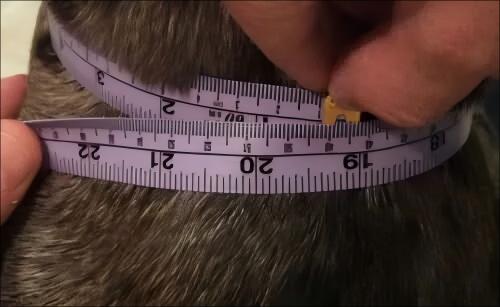
Use a soft measuring tape to measure the circumference of your dog’s neck. If you don’t have one, you can use a piece of string and then measure it against a ruler. Once you have the measurement, add extra space to ensure comfort and safety. A good rule of thumb is:
l Small dogs (up to 10 lbs): add about 1 inch
l Medium dogs (10–50 lbs): add about 2 inches
l Large dogs (50+ lbs): add about 3 inches
Adding this space prevents the collar from being too tight, while still making sure it’s secure enough that your dog can’t slip out.
Apply the Two-Finger Rule
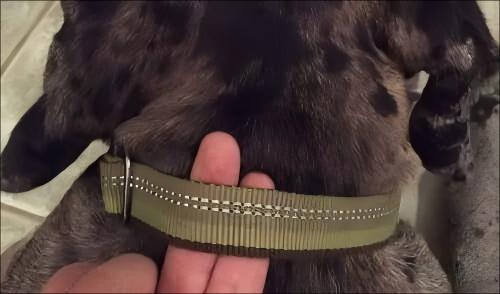
After adjusting the collar, use the two-finger rule to check the fit. Slide two fingers between the collar and your dog’s neck:
l If you cannot fit two fingers, the collar is too tight and may restrict breathing.
l If you can fit more than two fingers, the collar is too loose and may slip off.
l If two fingers slide in comfortably, the fit is just right.
This simple method ensures your dog’s collar is both safe and comfortable for everyday wear.
Different breeds have different needs when it comes to collar size and width:
lSmall breeds (Chihuahuas, Dachshunds, Toy Poodles): need narrow, lightweight collars to avoid neck strain.
lMedium breeds (Beagles, Cocker Spaniels, Border Collies): medium-width collars that balance comfort and durability.
lLarge breeds (German Shepherds, Labradors, Great Danes): wider, stronger collars that can withstand pulling and movement.
Breed-specific anatomy also matters. For example, Greyhounds and Whippets have slender necks and benefit from martingale collars that prevent slipping.
Dog Size | Neck Measurement | Add Extra Space | Recommended Collar Width |
Small (≤10 lbs) | Measure neck | +1 inch | Narrow/lightweight (1 cm–1.5 cm) |
Medium (10–50 lbs) | Measure neck | +2 inches | Medium width (1.5 cm–2.5 cm) |
Large (50+ lbs) | Measure neck | +3 inches | Wide/strong (2.5 cm–4 cm) |
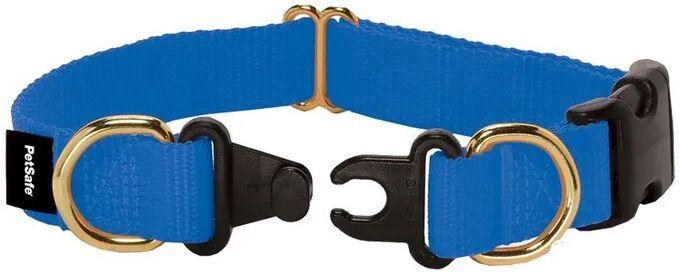
Overview: The flat collar is the most common style on the market, usually made of nylon or leather. It’s simple, affordable, and comes in endless variations — from budget-friendly basics to luxury designer brands.
Advantages:
lVery easy to put on and take off; most dogs adapt without discomfort.
lAvailable at every price range, with decorative options and even high-end custom designs.
lConvenient for attaching ID tags, which are essential in case your dog ever gets lost.
Disadvantages / Risks:
lOffers little control for strong pullers — pressure is concentrated on the neck.
lDangerous for dogs with eye pressure issues (e.g., glaucoma) or breeds prone to respiratory problems.
lFor long-haired or curly-coated breeds, flat collars can catch and tangle fur.
lDuring play, another dog might accidentally grab the collar with their teeth, which can cause choking or even strangulation.
Note: Flat collars are best for dogs that are already leash-trained and walk calmly beside you.
Overview: At first glance, the breakaway collar looks like a flat collar. The difference is a special buckle that automatically releases when pulled strongly, designed to prevent choking accidents if the collar gets snagged.
Advantages:
lProvides safety during play by releasing if bitten or caught on objects.
lDual D-rings allow the collar to function like a standard flat collar when a leash is clipped on.
lReduces risks for playful or social dogs that wrestle with other pets.
Disadvantages / Risks:
lMay unexpectedly detach if the leash is not clipped to both D-rings.
lNot recommended for dogs that pull heavily during walks, as it could open under strain.
Note: This collar is ideal for home use or play sessions. When walking your dog, always clip the leash to both rings to prevent accidental release.
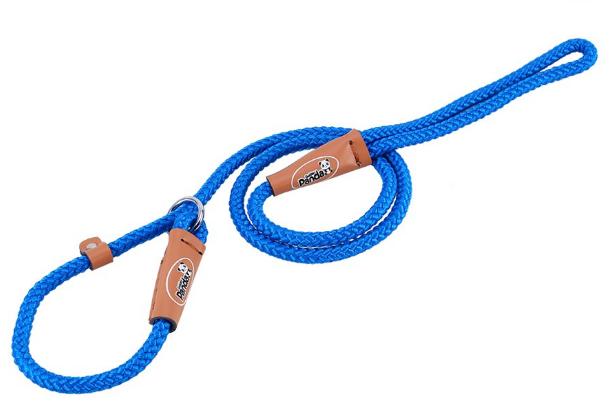
Overview: The choke chain, often called a P-chain, is a traditional training collar. It tightens when the dog pulls, delivering corrective pressure. Trainers use it to create a “light correction” signal before a stronger correction, but misuse is extremely common.
Advantages:
lCan provide quick, clear corrections when used properly.
lHelps some dogs learn to respond to light leash pressure instead of force.
Disadvantages / Risks:
lEasily misused: many owners pull too harshly, turning walks into discomfort or even pain for the dog.
lAll pressure is concentrated on one thin chain, which can increase eye pressure and harm sensitive breeds.
lRisk of coughing, choking, or even nerve injury if applied incorrectly.
lAbsolutely unsafe for tethering a dog — struggling can lead to fatal strangulation.
Note: To be fitted correctly, the chain must form a “P” shape (not a “Q”) and sit high behind the ears. The handler should lift upward, not sideways, to give corrections. Because of the complexity, this collar should only be used under professional trainer guidance.
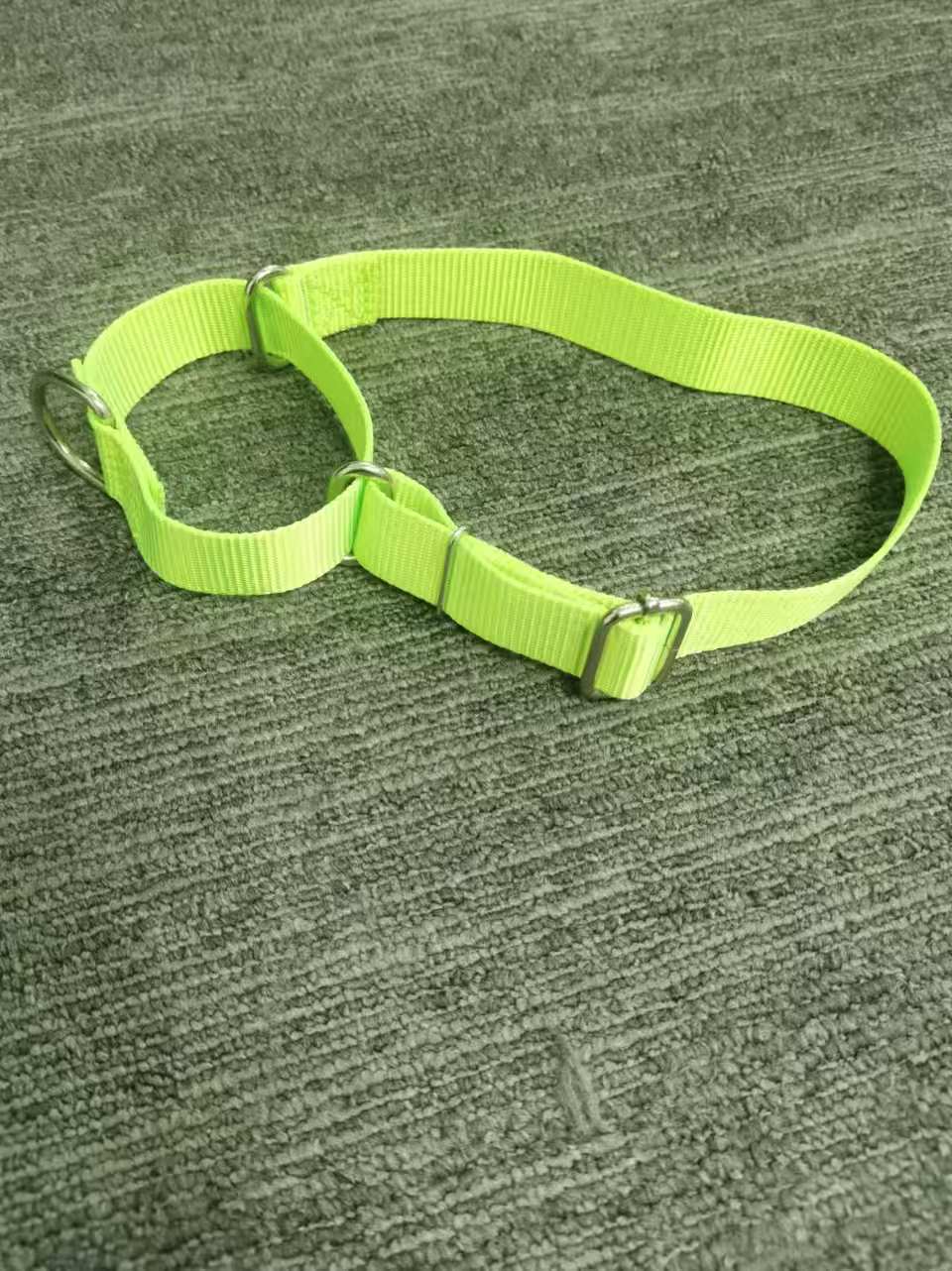
Overview: The martingale collar tightens slightly when pulled, preventing escape but without the harsh constriction of a choke chain. It’s especially popular for Greyhounds, Whippets, and other breeds with slender necks.
Advantages:
lPrevents dogs from slipping out of the collar — a common issue for narrow-headed breeds.
lSafer and gentler than choke chains, as the tightening is limited.
lApplies more even pressure around the neck.
Disadvantages / Risks:
lStill applies pressure to the neck if used too tightly.
lNot strong enough for very heavy pullers compared to training collars.
Note: A good choice for escape-prone dogs or breeds with slim necks. Works best as an everyday walking collar when adjusted correctly.
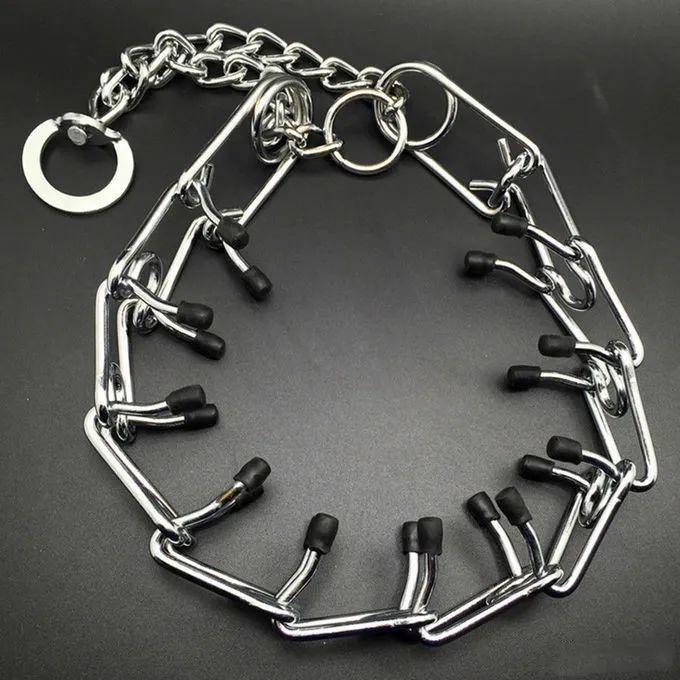
Overview: The prong collar looks intimidating with its inward-facing prongs, but it’s designed to distribute pressure evenly around the dog’s neck. When used properly, it often requires less force than a choke chain.
Advantages:
lEffective for strong pullers; small tugs give clear signals without excessive force.
lSpreads pressure across multiple contact points instead of one thin chain.
Disadvantages / Risks:
lMisuse can cause significant pain, injury, or fear.
lMay create negative associations: a dog frightened by another dog or object may link the prong’s discomfort to that trigger, worsening reactivity.
lIntimidating appearance leads many owners to use it incorrectly or too harshly.
Note: Best reserved for advanced training and only under professional supervision. Should never be used casually or as a primary collar.
Collar Type | Best For | Advantages | Disadvantages / Risks |
Flat Collar | Everyday use, leash-trained dogs | - Easy to put on & remove - Widely available in all price ranges - Ideal for holding ID tags | - Provides little control for pullers - Pressure on neck may harm dogs with glaucoma or breathing issues - Can snag in long fur |
Breakaway Collar | Playful/social dogs at home | - Safety buckle releases if collar gets snagged - Functions as flat collar when clipped to leash - Reduces choking accidents during play | - Can detach unexpectedly if not clipped to leash - Not suitable for strong pullers during walks |
Choke Chain (P-Chain) | Professional training only | - Provides quick corrections - Can teach dogs to respond to light pressure | - High misuse risk - Concentrated pressure can cause eye/neck injuries - Dangerous for brachycephalic breeds |
Martingale (Limited-Slip) | Greyhounds, Whippets, escape-prone dogs | - Prevents dogs from slipping out - Safer than a choke chain - Applies even pressure | - Not ideal for heavy pullers - Still applies pressure to neck if overused |
Prong Collar (Pinch Collar) | Strong pullers under professional guidance | - Spreads pressure evenly around neck - Requires less force to control pulling | - Looks intimidating - Misuse causes pain or injury - Can create negative behavioral associations |
Now that we’ve looked at the main types of dog collars — from flat collars to martingales and training chains — it’s equally important to consider the materials and design details that affect comfort, durability, and style. Even within the same collar type, the choice of leather, nylon, chain, or buckle style can make a big difference for your dog’s safety and your daily convenience.
Leather Dog Collars
Flat Leather Collars
Flat leather collars are a classic choice, often favored for their stylish look and snug fit. They sit flat against your dog’s neck and are generally comfortable for everyday wear.
lAdvantages: Comfortable, long-lasting, and elegant in appearance. They are also sturdy enough to hold ID tags securely.
lDisadvantages: The wide surface area can press against the coat, causing matting or tangling in long-haired breeds.
Rolled Leather Collars
Rolled or round leather collars solve the matting problem by reducing surface contact with the fur. The rounded shape rolls smoothly against the hair, making them ideal for dogs with long or curly coats.
lAdvantages: Prevent fur tangling and reduce matting. Comfortable for most long-haired dogs.
lDisadvantages: Because of the smaller contact area, they can feel less comfortable under heavy pulling.
Leather dog collars are best for pet owners who value durability and a stylish, traditional look, with rolled options offering extra comfort for long-haired breeds.
Nylon Dog Collars
Nylon dog collars are one of the most popular choices thanks to their lightweight feel and bright, colorful designs. They are often more affordable than leather and can be easily washed.
lAdvantages: Lightweight, versatile, easy to clean, and available in endless color and pattern options. They are great for active dogs that spend time outdoors.
lDisadvantages: Nylon can generate static electricity that irritates some dogs. The material is typically thicker than leather and may fray or snag over time.
A nylon dog collar is a practical, low-maintenance option for everyday use, especially for puppies or active pets that need a washable, colorful accessory.
Metal chain collars are strong and chew-resistant, making them suitable for large or powerful breeds. Their slim design minimizes fur matting and can be less visible on long-coated dogs.
lAdvantages: Extremely durable, resistant to chewing, and unlikely to tangle or damage fur. Well-suited for large or strong dogs.
lDisadvantages: A chain collar often looks harsh compared to leather or nylon. Without proper care, chains can rust and stain the dog’s neck fur.
Chain dog collars are best for large, strong breeds where durability is the top priority, though they may not appeal to owners looking for a softer, more decorative style.
Prong Buckle Collars
Prong buckle collars, similar to traditional belt buckles, are known for their strength and security.
lAdvantages: Extremely sturdy and secure. They are recommended for large or powerful dogs that need a collar that cannot break under force.
lDisadvantages: Over time, the holes in leather or nylon straps may stretch out, which can make the collar look less neat.
Plastic Clasp Collars
Plastic clasp collars use a quick-release clip, making them convenient for daily wear.
lAdvantages: Lightweight, easy to put on and take off, and available in stylish designs. Perfect for small to medium dogs and casual use.
lDisadvantages: Not as strong as prong buckles. Plastic clasps can snap if subjected to heavy pulling, making them unsuitable for strong or large dogs.
Choosing between a prong buckle and a plastic clasp depends on your dog’s size and strength: prong buckles are secure for powerful breeds, while plastic clasps are ideal for smaller pets and owners who value convenience.
Factor | Options | Advantages | Disadvantages / Risks | Best For |
Leather (Flat) | Traditional belt-style | Comfortable, stylish, fits snugly | Can cause matting in long-haired breeds | Everyday use for calm dogs, owners who like a classic look |
Leather (Rolled) | Cylindrical/rounded | Prevents fur tangling, better for long-haired dogs | Less comfortable under heavy pulling | Long-haired or curly-coated breeds |
Nylon | Woven fabric | Lightweight, washable, colorful | May fray, cause static, often thicker/heavier | Active dogs, owners who want easy cleaning & variety |
Chain (Metal) | Link or steel collars | Very durable, chew-proof, minimal fur matting | Harsh look, may rust, can stain fur | Large, strong dogs, long-haired breeds |
Prong Buckle | Traditional belt buckle | Extremely strong, hard to break | Holes may stretch over time | Large or powerful dogs |
Plastic Clasp | Quick-release clip | Lightweight, convenient, stylish | Less durable, may snap under force | Small to medium dogs, casual daily walks |
Special Features | Reflective strips, GPS, LED, embroidered logos | Improves safety & personalization | Can add cost | Night walks, brand customization, tech-savvy owners |
Even the best-fitted collar won’t stay perfect forever. Puppies grow quickly, which means their collars need frequent adjustments or replacements. Adult dogs can also gain or lose weight, changing the way a collar fits.
lFor puppies: Check the fit weekly. A collar that fit last month may now be too tight as your puppy grows.
lFor adult dogs: Weight fluctuations or seasonal coat changes can affect fit. Re-check every few weeks to ensure comfort.
lWear & tear: Look for frayed fabric, loose stitching, rusted metal, or stretched buckles. These weaken the collar and may put your dog at risk.
lReplacement: Don’t wait until the collar breaks. Replace it as soon as you notice damage or discomfort.
Regular checks mean your dog’s collar will always stay safe, secure, and comfortable.
How tight should a dog collar be?
Use the two-finger rule: you should be able to slide two fingers comfortably between the collar and your dog’s neck.
What size collar should I get for my puppy?
Measure your puppy’s neck and add 1–2 inches. Since puppies grow fast, choose an adjustable collar and check the fit weekly.
Is a collar or harness better for walking?
Collars are fine for leash-trained dogs, but harnesses distribute pressure more evenly, making them a safer choice for pullers, small breeds, or dogs with respiratory issues.
How often should I replace my dog’s collar?
At least once a year, or sooner if you notice signs of wear, damage, or poor fit. Puppies may need replacements every few months.
Which collar is safest for small breeds?
Lightweight options like nylon or rolled leather collars are gentler on small dogs. Avoid heavy chains or bulky buckles.
A well-fitted dog collar is more than an accessory — it’s your dog’s first line of safety. By measuring your dog’s neck correctly, choosing the right collar type and material, and performing regular checks, you ensure comfort, security, and peace of mind.
Whether you go for a stylish leather collar, a lightweight nylon option, or a reflective collar for night walks, the most important factor is always the fit. A properly chosen and maintained collar keeps your dog safe, helps display ID tags, and allows you to enjoy stress-free walks together.
Remember: measure, choose wisely, and check often — your dog’s safety depends on it.